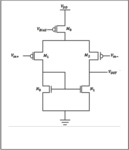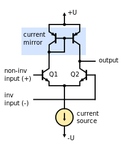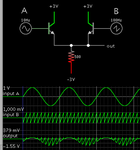sherif96
Member level 4
It might be a pretty basic question, but what is the difference between an NMOS current source driving a differential pair and a PMOS current source driving a differential pair,I am trying to find out which would give a larger output swing and why, so what would be the difference in regards to maximum output voltage and minimum output voltage? if I have a circuit as attached, what would be the max output voltage equation for both and what would be the minimum? - let the current source in the second attachment be a NMOS transistor


